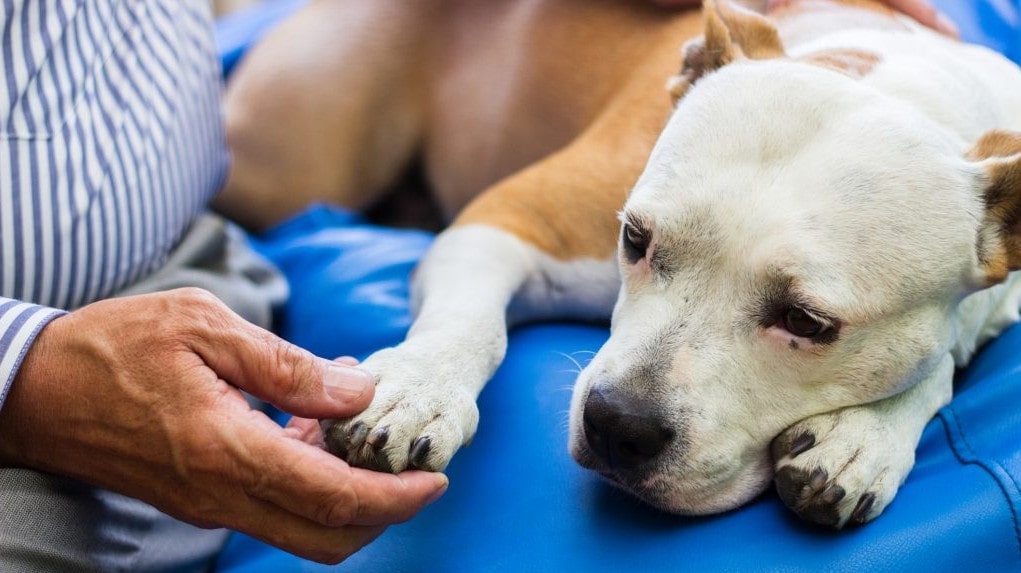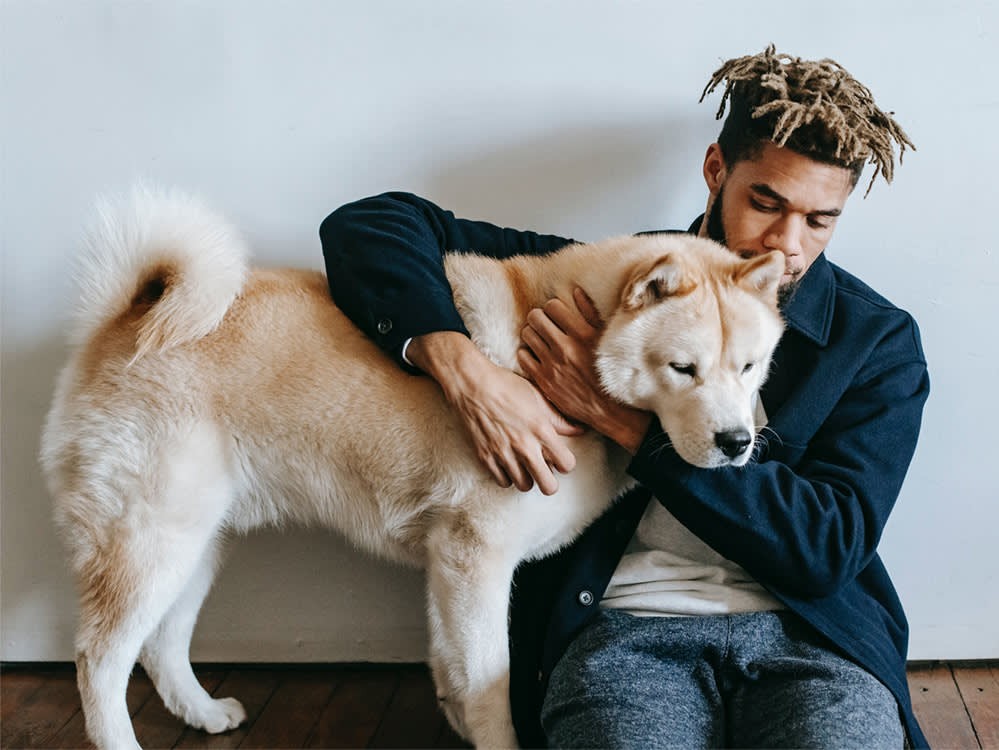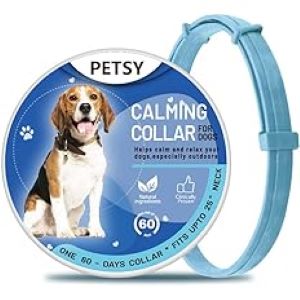Did you find something odd about your dog’s behaviour? Our dogs frequently endure pain in silence. It can often be challenging to tell when a dog is in pain due to an injury or an underlying condition because canines cannot talk.
There are, however, a number of indicators of pain in dogs, some more visible than others. Learn how to see the clear indications of pain in dogs, the reasons for it, and the things you can do to help.

You Might Also Like:
Signs and Symptoms That Indicate Your Dog Is in Pain
You might find out that something is wrong with your doggy and there are various signals and symptoms that your dog might be showing to you when he is undergoing pain, it can be acute or long term such as:
1. Antisocial or Aggressive Behaviour
They may stop rushing to greet you at the door, make an effort to avoid making eye contact with you, or even turn violent. When your dog withdraws or acts weirdly quiet, it may be a sign that they are in discomfort. Any detectable shift in behaviour may be grounds for alarm.
2. Mobility Issues
You might observe changes in a dog’s movement if they have an injury or are coping with arthritis. The following are typical dog pain indicators that have an impact on their mobility :
- Limping
- Difficulties lying down or rising
- Hesitate to jump or use stairs
- Walking slower or refusing to walk
- Alterations in eating, drinking, and sleeping habits
When a dog is in discomfort, they tend to sleep more because they are trying to get better, or it may be hard for them to get up and be active. Common symptoms include loss of appetite along with obvious changes in how much water they’re consuming. Eating difficulties, especially with dried foods or tough chews, might be a sign of oral pain.

3. Changes in Their Body and Posture
Have you noticed any change in your dog’s posture, such as a hunchback or rigidity? Perhaps they are moving strangely, or you have observed that getting up after lying down sometimes seems difficult or slow. Are they less active than normal, or are they having problems while climbing the stairs?
These are all indications that justifies that your dog might be unwell.
4. Vocalization
A hurt dog may express their pain either through whining, whimpering, yelping, growling, and even howling.
5. Excessive Grooming
When a dog gets injured, one of its first instincts is to lick the wound repetitively and treat it. While cuts are more obvious, pain can occasionally be internal as well. An illustration would be licking their knee after tearing a ligament.
According to Oakbrook Animal Hospital “It is always better to consult your veterinarian if your dog is excessively licking or chewing on an area.“

Physical Changes in Dog
Your pup might be in pain if you pay a close attention to his body, it is possible to observe the physical changes easily in your dog’s body as you can look out for dog’s body language. Here are the few physical indicators which can prove that your dog is in pain :
- You can observe that your dog has tight or twitching muscles
- When you check their heart rate, they may show increase in heart beats
- There is a possibility that they have a Curved back
- You often watch your dog crying, whining or whimpering
- Suddenly you observe that your dog is shaking or trembling
- While going out for a walk you might find out that your dog is holding their head below their shoulders which is not normal
They might also show signs of tiredness, drooling, and have a reduced appetite in case of any illness.[1] Along with that, swelling of their paws, legs and face are also an indication that they may be in pain.
Did You Observe Any Changes in Your Dog’s Behaviour?
You might wonder, What are the possible behaviours that indicate your dog is in pain? There is a possibility that your pet might be suffering from an illness, well there are many such signals that you can look out for, one of them is your dog might be in pain if they are behaving differently as compared to other days.
They seem to be extremely “grumpy” and they try to avoid being petted, especially at the irritable area. You might find out that they are differently carrying their tails, especially if they have ongoing hip or back problems. If you observe closely, your dog might exhibit uneasiness, and you can clearly see something is not right with your dog.
There are some dogs who try to get more clingy day by day, and this could mean they are asking for your help. Also, you might see that your doggy is not responding or reacting to anything, and they appear nervous or depressed.

What Can You Do to Help Your Dog?
Dogs are speechless, so they cannot ask for your help, but they’ll do certain kind of behaviours or actions that will act as a sign that they are not doing well, owners are supposed to help them and protect them from any sickness.
Start with identifying the possible signals, and then make an appointment with your vet to figure out what the problem is. If your dog is in severe pain or has other scary symptoms, contact a veterinarian immediately.
Avoid any physical activities of your dog until you consult the vet and try to keep the record of the signs that you are seeing and while observing you might record a video or a photo of your dog showing the symptoms.
It is always a good idea to have a detailed conversation with your vet to explore all the treatment options available, and you might take a second opinion too if it is necessary.
During summer, you can feed them two-three frozen chunks of pineapple as a refreshment, as it helps to keep their body hydrated all day. However, excess can result in stomach issues like vomiting, diarrhoea and others.
Giving your dog a food source that is simple to digest will aid in reviving their appetite and restoring their health. White rice and millet are simple starches that are easy for your pet to digest. Likewise, including protein in the form of fried eggs, cottage cheese, steamed fish or turkey might provide them with the necessary nutrients for a speedy recovery.[2]
You can provide comfort to your dog by giving him a warm blanket or creating a cosy environment inside your house where they can properly rest and heal. A comforting presence of the owner will speed up the healing process.

FAQs
How do dogs show pain or discomfort?
Dogs may show symptoms of pain and discomfort like shaking, sagging ears, slumped posture, anger, irritability, panting or crying excessively, unwillingness to play, interact, or exercise, lameness (limping), stiffness after resting, and loss of appetite are some other signs to look out for.
How do I know my dog’s pain level?
You can check your dog’s pain level by palpation and its responses like increase in respiration rate, eyes are shifting or if your dog is unable to move and change his position.
Do dogs sleep when they are in pain?
Yes, many dogs sleep when they are in pain because they are trying to heal while resting because it is difficult for them to move around.
What you shouldn’t do to help your dog?
Unlike Humans, dogs have a different body, so it is not advisable to give your dogs the same medicine that you use for pain relief like Ibuprofen or Tylenol as it is toxic to them. Thus, wait for the pet examination at the veterinary hospital and discuss the treatment options with the doctor.
Conclusion
Your dog might be in pain if he’s showing the physical symptoms like crying, increase in heart rate, curved back and others, also you may observe the behavioural changes like he’s nervous or depressed or grumpy and even aggressive.
You can help him by booking an appointment with the veterinarian, and provide fruits like pineapple in the appropriate quantity.
Also, it is best to not give your dog any pain relieving medications without consulting the animal doctor.
References:
- 7 Reasons Your Dog May Be Experiencing a Loss of Appetite. (n.d.). Volhard Dog Nutrition.
- Alexander Animal Hospital: Vet Clinic & Surgeons | Severna Park, MD. (2019, June 28). Alexander Animal Hospital.






